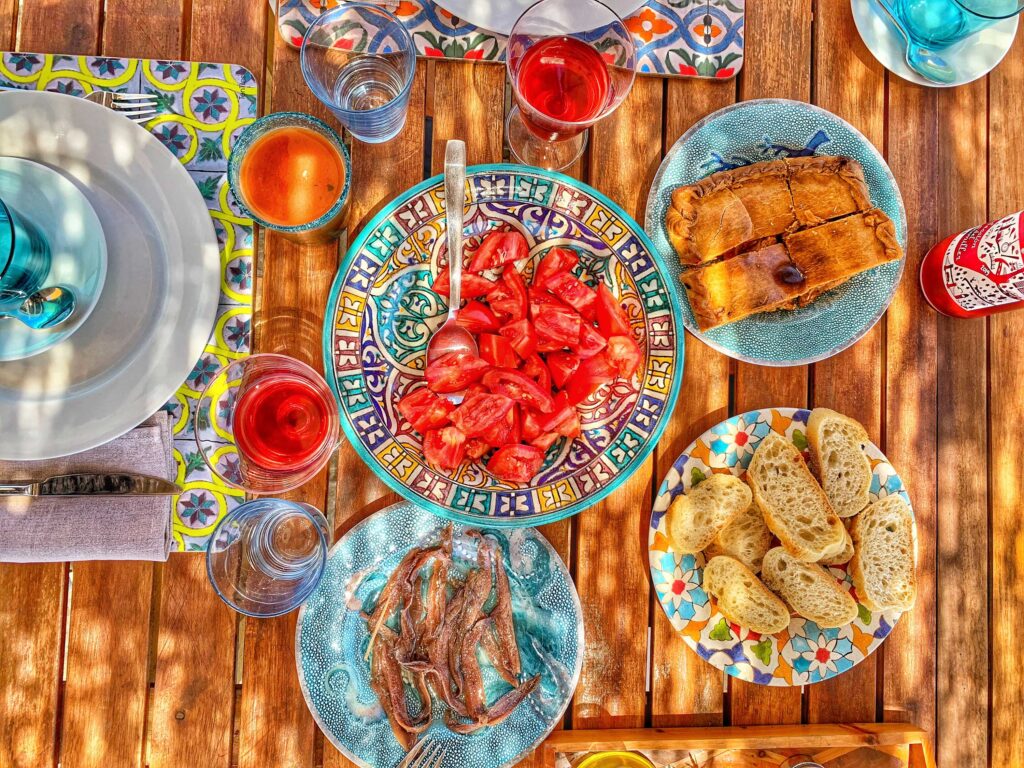Mediterranean Food: A Flavorful Journey Through Custom and Preference
Mediterranean cuisine serves as an exceptional junction of practice and preference, attracting from a varied array of societies that span continents. The extensive flavors and wellness benefits associated with the Mediterranean diet plan have amassed international adoration, yet beneath its surface area lies a complex narrative of historical influences and regional specialties that warrant additional exploration.
Beginnings of Mediterranean Food
The origins of Mediterranean food are deeply rooted in a rich tapestry of background, geography, and social exchange. This culinary custom arises from an area specified by its diverse landscapes, consisting of coastlines, hills, and fertile levels, which have affected its agricultural practices and food manufacturing. The Mediterranean Container, encompassing countries such as Italy, Greece, Spain, and Turkey, has actually been a crossroads of worlds for centuries, where profession routes promoted the exchange of active ingredients, techniques, and culinary ideologies.
Ancient societies, including the Greeks and Romans, significantly shaped Mediterranean foodways, highlighting the importance of fresh, seasonal fruit and vegetables and communal dining. The spread of agriculture, particularly the growing of grapes, grains, and olives, laid the foundation for meals that continue to be staples today. Moreover, the impact of various conquerors and traders, such as the Moors and Ottomans, presented cooking styles and new tastes, additionally enriching the food.
Today, Mediterranean food is celebrated not just for its flavor and variety but likewise for its focus on healthy eating, embodying a well balanced technique to nourishment that remains to attract international tastes. This historical interplay of cultures and active ingredients develops the significance of what we currently acknowledge as Mediterranean food.
Trick Components and Flavors
Mediterranean cuisine is defined by a vivid variety of vital active ingredients and tastes that mirror the area's farming bounty and social heritage. Central to this culinary custom are fresh vegetables, fruits, and herbs, which provide necessary nutrients and vibrant preferences. mediterranean restaurant las vegas. Staples such as tomatoes, eggplants, olives, and bell peppers are often included, showcasing the area's varied environment and dirt
Olive oil, often concerned as the backbone of Mediterranean food preparation, imparts splendor and deepness to dishes. It is matched by a range of spices and herbs, consisting of oregano, garlic, and basil, which raise the tastes of meats, seafood, and grains. Grains, particularly wheat and rice, work as fundamental parts, with dishes like couscous and pasta being staples throughout the area.
Additionally, vegetables such as chickpeas and lentils not just give protein however also contribute to the cuisine's heartiness. Collectively, these components create a harmonious balance that specifies Mediterranean food.
Regional Variations and Specializeds
Varied local variants and specializeds characterize Mediterranean food, reflecting the distinct cultural influences, location, and background of each location. In the coastal regions of Italy, for instance, seafood preponderates, with dishes like Sicilian caponata showcasing a blend of eggplant, olives, and capers. Greece is renowned for its usage of feta cheese, olives, and fresh natural herbs, obvious in traditional prep work such as moussaka and spanakopita.
The Levantine countries, including Lebanon and Syria, highlight the use of grains and seasonings, with specializeds like tabbouleh and kibbeh taking spotlight. North Africa, especially Morocco, sticks out for its aromatic tagines and couscous, often enriched with dried fruits and a rich array of flavors.
In contrast, the Iberian Peninsula highlights making use of cured meats and vibrant tastes, with Spanish paella and Portuguese bacalhau exemplifying the region's cooking diversity.
Each Mediterranean area not just celebrates its regional active ingredients but likewise reflects the historical trade routes and social exchanges that have shaped its food go to this web-site society, producing a vibrant tapestry of flavors that mesmerizes the taste.
Cooking Methods and Designs
Cooking strategies and styles in Mediterranean food are as differed as the regions themselves, often reflecting available active ingredients and regional practices. The heart of Mediterranean food preparation hinges on its simpleness, where fresh fruit and vegetables, natural herbs, and olive oil take center phase. Techniques such as barbecuing, toasting, and sautéing are commonly used, allowing the all-natural tastes of the active ingredients to shine.
Cooking, prevalent in coastal locations, infuses this article fish and shellfish and meats with a great smoky splendor, while toasting, particularly in the Middle East, enhances the sweet taste of root vegetables and meats. Sautéing, often utilized in Italian and Spanish meals, offers a quick approach to draw out the splendor of garlic and onions, acting as a structure for many sauces.
Stewing is another vital method, specifically in North African foods, where tagines simmer fragrant flavors and tender meats slowly, fusing flavors over time - mediterranean restaurant las vegas. Baking, especially in the context of bread and pastries, holds a significant location in Mediterranean society, with each area flaunting its very own specializeds. Generally, these diverse cooking methods not just celebrate the ingredients but likewise reflect the deep-rooted culinary heritage of the Mediterranean, making each dish a testament to its rich background

Health Advantages of Mediterranean Diet Regimen
Routinely identified for its numerous wellness benefits, the Mediterranean diet highlights the usage of whole, minimally processed foods that advertise total well-being. This nutritional pattern is rich in fruits, veggies, entire grains, beans, nuts, and healthy fats, particularly olive oil, while urging moderate consumption of fish and chicken and restricting red meat and sugary foods.
Research study regularly connects the Mediterranean diet regimen to a selection of health and wellness advantages. Notably, it has been related to a minimized threat of cardio diseases, largely due to its focus on heart-healthy fats and antioxidants. The diet is also thought to boost cognitive function and may lower the threat of neurodegenerative conditions such as Alzheimer's.
Additionally, the Mediterranean diet supports weight monitoring via its focus on nutrient-dense foods that promote satiety. The high fiber material from fruits, veggies, and whole grains help digestion and helps preserve healthy and balanced blood sugar degrees.
Along with physical health and wellness, the Mediterranean diet fosters social health, as it encourages public meals and shared culinary experiences. Overall, adopting this diet is not just a path to improved health and wellness but likewise a party of flavors, culture, and neighborhood.

Final Thought
Finally, her response Mediterranean cuisine functions as a rich tapestry of practice and preference, showcasing varied local flavors and components. The emphasis on fresh produce, olive oil, and aromatic natural herbs not only boosts cooking experiences yet additionally advertises many health and wellness advantages. By embracing classic food preparation techniques and fostering communal dining, this cooking heritage proceeds to influence and attach people throughout cultures, solidifying its condition as a cherished and prominent component of global gastronomy.

Food preparation techniques and designs in Mediterranean cuisine are as differed as the areas themselves, commonly mirroring readily available active ingredients and local customs.In conclusion, Mediterranean cuisine offers as a rich tapestry of practice and preference, showcasing varied regional flavors and active ingredients.